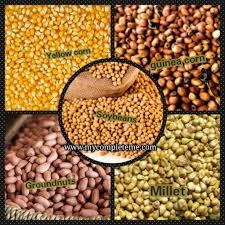Author's details
- Dr. Khashau Eleburuike
- MBBS (Ilorin) MSc. Global Health Karolinska Institute.
- Resident doctor in family medicine in Northern Sweden.
Reviewer's details
- Abdurrazzaq Alege
- MBBS, MBA (Healthcare Mgt), FMCPaed, FIPNA.
- Consultant Paediatrician/Paediatric Nephrologist, Federal Teaching Hospital, Katsina, Nigeria.

- Date Published: 2025-04-28
- Date Updated: 2025-04-28
Patient Information: Constipation in Children
What is Constipation?
Constipation means a child has trouble passing stool (poo). This may mean:
- Infrequent bowel movements (less than 3 times per week)
- Hard, dry, or painful stool
- Straining or crying during bowel movements
- Belly pain or swelling
- Stool accidents or soiling (small amounts leaking out)
Constipation is common in children and usually not dangerous, but it can cause discomfort and stress for both child and parent. With proper care, it can be treated easily.
In Sub-Saharan Africa, common causes include:
- Low-fiber diets (not enough fruits, vegetables, and whole grains)
- Not drinking enough clean water
- Delaying toilet use (e.g. due to fear of dirty or unsafe school toilets)
- Sudden changes in diet or routine
- Illness or fever
- Certain medicines (e.g. for coughs, pain, or epilepsy)
- Emotional stress (new school, family issues, etc.)
- Rarely, constipation may be caused by medical conditions like Hirschsprung disease or spinal cord issues.
Your child may be constipated if they:
- Pass stool less than 3 times per week
- Struggle or cry while passing stool
- Complain of belly pain
- Have hard, dry, or large stools
- Refuse to eat
- Soil their underwear (leakage from a blocked bowel)
- Suddenly start bedwetting after being dry
- Avoid using the toilet
- Swollen belly.
- Vomiting occasionally.
✅ Give more fluids
Encourage your child to drink clean, safe water throughout the day, especially in hot weather.
✅ Add fiber to meals
Include:
- Fruits (e.g., pineapple, cashews, tangerines, ripe pawpaw, oranges)
- Vegetables (e.g., pumpkin leaves, spinach, green leaves)
- Whole grains (e.g., millet, sorghum, guinea corn, maize meal with bran)
- Legumes (beans, lentils, groundnuts)
✅ Encourage toilet routine
- Encourage children to use the toilet at the same time every day, especially after meals.
- Teach them to relax and take time on the toilet.
- Make sure toilets are safe, private, and clean, especially at schools.
✅ Encourage movement
Active children have healthier digestion. Let them play and move daily.
✅ Respond to stool withholding
Some children avoid going to toilet due to previous painful experiences. Offer praise, support, and try to make toilet time relaxed.
Go to a clinic or hospital if your child:
- Has severe belly pain
- Has not passed stool in more than 5–7 days
- Passes blood-stained stool
- Has vomiting, fever, or swelling of the abdomen
- Is losing weight or refusing all food
- Soils their underwear often (after being toilet-trained)
Yes — in some cases, a health worker may prescribe stool softeners or mild laxatives. These should only be used under medical supervision. Overuse can be harmful.
Avoid giving herbal mixtures unless advised by a qualified health provider.
Cultural Beliefs and Misunderstandings
| Myth | Truth |
|---|---|
| The child is bewitched or cursed | Constipation is a medical issue related to diet, fluids, or routine |
| Enemas or strong herbs are always needed | These can sometimes make things worse or cause pain |
| A child must poo daily | Some healthy children may poo every 2–3 days — focus on comfort, not frequency |
- Be patient and avoid punishment
- Create a calm, regular toilet routine
- Offer encouragement and rewards for effort (not just results)
- Talk openly about bowel habits — help reduce embarrassment
Final Words
Constipation is common, treatable, and preventable. With good food, enough fluids, and a caring toilet routine, your child can stay healthy and happy.
- Tabbers MM, et al. (2014). Evaluation and treatment of functional constipation in infants and children: Evidence-based recommendations from ESPGHAN and NASPGHAN. Journal of Pediatric Gastroenterology and Nutrition, 58(2), 258–274.
- World Health Organization (WHO). (2022). Improving nutrition in Africa. https://www.afro.who.int
- Mugani R, et al. (2020). Management of common childhood gastrointestinal issues in low-resource settings. African Journal of Paediatric Health, 27(1), 45–51.
- UNICEF. (2019). Nutrition, Water and Sanitation Guidelines in Sub-Saharan Africa. https://www.unicef.org
- Torkashvand F, et al. (2021). The effect of dietary fiber intake on childhood constipation: A review. BMC Pediatrics, 21(1), 497.
